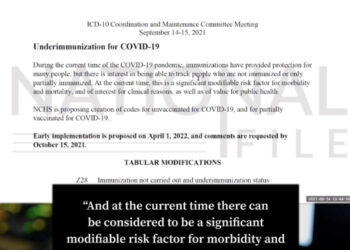Last Updated on August 16, 2019
Internal memos from Google, leaked to Project Veritas, show that sometimes the left even confuses itself with its bamboozling and ridiculous attempts to justify so-called “diversity initiatives”.
“Coffee Beans, or What Does Diversity Hiring Mean Anyway?” is an analogy created by Google to “help explain diversity hiring” to its staff. You can read it in full below. You may need to take a few breaks, just in case your brain starts overheating…
Imagine a world where there are two kinds of coffee beans that grow naturally. They are the orange beans and the teal beans. Over time, people have done extensive studies and have discovered that the “best” coffee is made when you mix these beans and when all of them are Grade A beans. Further, a certain set of coffee aficionados will spend big money on the “best” coffee, so there are huge incentives to produce this “best” coffee.
Here are the facts about the coffee beans that are important:
- 90% of the coffee beans growing in the wild are orange
- 10% of the coffee beans growing in the wild are teal
- 50% of coffee beans (both orange and teal, of all grades) are growing along roads where they are easily accessible. 50% of coffee beans (both orange and teal, of all grades) are more difficult to find and effort must be spent looking for them.
- 1% of orange beans are Grade A and 1% of teal beans are Grade A
- The market for the “best” coffee could easily expand to use all the Grade A teal beans.
- A quick, cheap evaluation process can be used to identify Grade A beans. It incorrectly identifies 20% of Grade A beans as a lower Grade and they end up being used for less premium coffees.
- A slower, more expensive process can also be used to identify Grade A beans. It incorrectly identifies only 2% of Grade A beans as a lower Grade.
Given the above facts, what would you do to make the most “best” coffee?
- You would pick as many easily accessible orange beans as you could, and you would use the quick, cheap evaluation process for them.
- You would spend more time looking for the teal beans, and you would spend more time evaluating them (using the expensive process) to make sure you didn’t throw any away.
That’s what the high tech companies are doing with diversity hiring – they are looking harder for the under-represented groups and they are spending more time/effort making sure they don’t throw any of the good ones away.
Got that? No, neither did I. The people it was intended for didn’t seem to fare any better either. In an email chain, one employee wished to translate the document and publish it on her website, to help her friends and others understand why diversity was so important when hiring people. However, someone from Google’s press team responded that they may face “stiff blowback” and that they found it “too reductive” as an analogy. Dana Dalhstrom agreed, and said it sounds like “good advice”:
To me, there are at least two aspects of the charge that it’s “reductive”. Coffee beans are unlike people in that it doesn’t matter how we treat them—only how the liquid tastes after we roast, grind, and decoct them—and in the first place, resorting to analogies can seem patronizing to the audience, insulting to their intelligence.
Dahlstrom went on to say that her initial response was “confusion” and that she “found the presentation of the statistical argument overcomplicated with non-essential details… It took me several readings to understand it initially.” She also highlighted that if people were to “choose something like a coffee-bean analogy, not to promote different evaluation for processes for different colours”, describing that as a potential “lightning rod”.
Others vociferously disagreed. Alex Nicolaou said that Dahlstrom’s messages demonstrated that she “completely [doesn’t] get or [doesn’t] agree with the point of the document”:
It’s not at all about planting more beans. It’s about recognizing that diversity hiring efforts don’t have to amount to lowering the bar: that is is possible to imagine coming up with processes where the bar is maintained but diversity is still improved.
The argument then spiraled down the email chain, with Dahlstrom shooting back, denying that she failed to understand the document, and others sending back long blocks of text to justify their point. You can read the whole chain here.
At one point, Dahlstrom noted that “since go/coffee-beans seems to misrepresent Google’s hiring practices in a way that could raise legal questions, I think we’re better off not sharing it externally.”




















